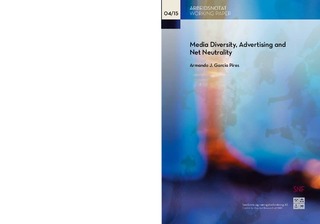| dc.description.abstract | In this paper, we analyze the effects of net neutrality on media
diversity. We show that in the net neutrality regime, media firms al-
ways provide media diversity, whereas in the no net neutrality regime,
the equilibrium of the model depends on the relation between net-
work capacity and network traffic. If the network capacity is large
relatively to network traffic, the equilibrium of the no net neutrality
regime is similar to the one under the net neutrality regime. However,
if network capacity is small relative to network traffic, under the no
net neutrality regime media firms do not provide media diversity. The
reason is that when network capacity is small relative to network traf-
fic, the no net neutrality regime hinders competition. In other words,
with no net neutrality, the media firm with priority sees its hinter-
land more protected from its rival than under net neutrality, and the
contrary for the firm with no priority. As a result, while the media
firm with priority has less need to provide media diversity to attract
demand and as such advertising revenues, the media firm with no pri-
ority finds it more difficult to use media diversity to attract demand
and advertising revenues. | nb_NO |
